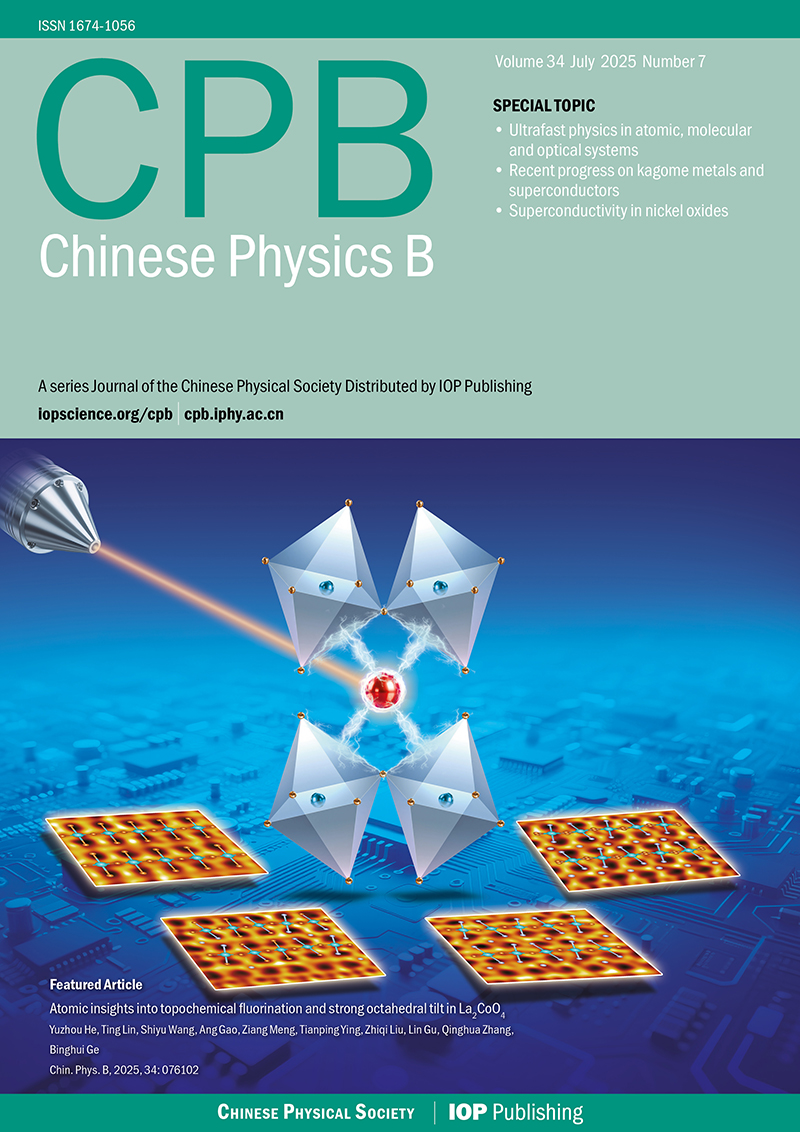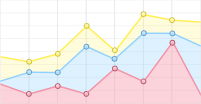|
Ma Z, Ji X, Lin S, Chen X, Wu D, Li X, Zhang Y, Shan C, Shi Z and Fang X 2023 Adv. Mater. 35 2300731
Google Scholar
Pub Med
|
|
Banerjee D and Saparov B 2023 Chem. Mater. 35 3364
Google Scholar
Pub Med
|
|
Zhang Z, Zhao R, Teng S, Huang K, Zhang L, Wang D, Yang W, Xie R and Pradhan N 2020 Small 16 2004272
Google Scholar
Pub Med
|
|
Kumar P, Creason T D, Fattal H, Sharma M, Du M H and Saparov B 2021 Adv. Funct. Mater. 31 2104941
Google Scholar
Pub Med
|
|
Zhang M, Wang X, Yang B, Zhu J, Niu G, Wu H, Yin L, Du X, Niu M, Ge Y, Xie Q, Yan Y and Tang J 2021 Adv. Funct. Mater. 31 2007921
Google Scholar
Pub Med
|
|
Zhang Z, Guo X, Huang K, Sun X, Li X, Zeng H, Zhu X, Zhang Y and Xie R 2022 J. Lumin. 241 118500
Google Scholar
Pub Med
|
|
Jun T, Sim K, Iimura S, Sasase M, Kamioka H, Kim J and Hosono H 2018 Adv. Mater. 30 1804547
Google Scholar
Pub Med
|
|
Zhang Z X, Li C, Lu Y, Tong X W, Liang F X, Zhao X Y, Wu D, Xie C and Luo L B 2019 J. Phys. Chem. Lett. 10 5343
Google Scholar
Pub Med
|
|
Roccanova R, Yangui A, Seo G, Creason T D, Wu Y, Kim D Y, Du M H and Saparov B 2019 ACS Mater. Lett. 1 459
Google Scholar
Pub Med
|
|
Creason T D, Yangui A, Roccanova R, Strom A, Du M and Saparov B 2019 Adv. Opt. Mater. 1901338
Google Scholar
Pub Med
|
|
Ma Z, Shi Z, Qin C, Cui M, Yang D, Wang X, Wang L, Ji X, Chen X, Sun J, Wu D, Zhang Y, Li X J, Zhang L and Shan C 2020 ACS Nano 14 4475
Google Scholar
Pub Med
|
|
Wang L, Shi Z, Ma Z, Yang D, Zhang F, Ji X, Wang M, Chen X, Na G, Chen S, Wu D, Zhang Y, Li X, Zhang L and Shan C 2020 Nano Lett. 20 3568
Google Scholar
Pub Med
|
|
Ma Z, Shi Z, Yang D, Li Y, Zhang F, Wang L, Chen X, Wu D, Tian Y, Zhang Y, Zhang L, Li X and Shan C 2021 Adv. Mater. 33 2001367
Google Scholar
Pub Med
|
|
Wang Z, Wang L, Xie J, Yang Y, Song Y, Xiao G, Fu Y, Zhang L, Fang Y, Yang D and Dong Q 2024 Small 20 2309922
Google Scholar
Pub Med
|
|
Wu D, Luo Y, He P, An K, Lai J, Feng P, Zhou M, Liu Y, Tang X and Han G 2023 ACS Appl. Opt. Mater. 1 78
Google Scholar
Pub Med
|
|
Fan R, Qiao J, Xu J, Feng S and Liu G 2024 Opt. Lett. 49 3942
Google Scholar
Pub Med
|
|
Yang D, Wang F, Li S, Shi Z and Li S 2024 J. Phys. Chem. C 128 2223
Google Scholar
Pub Med
|
|
Yao M M, Zhang Q, Wang D, Chen R, Yin Y C, Xia J, Tang H, Xu W P and Yu S H 2022 Adv. Funct. Mater. 32 2202894
Google Scholar
Pub Med
|
|
Dai P, Xu Z M and Wang Y X 2011 Chin. Phys. Lett. 28 017804
Google Scholar
Pub Med
|
|
Fan R, Qiao J, Xu J, Feng S and Liu G 2023 J. Alloys Compd. 960 170858
Google Scholar
Pub Med
|
|
Wang S, Liu R, Li J, Meng C, Liu J, Chen J, Cheng P and Wu K 2024 Angew. Chem. Int. Ed. 63 e202403927
Google Scholar
Pub Med
|
|
He T, Zhou Y, Wang X, Yin J, Gutiérrez-Arzaluz L, Wang J X, Zhang Y, Bakr O M and Mohammed O F 2022 ACS Energy Lett. 7 2753
Google Scholar
Pub Med
|
|
Wen X, Buryi M, Babin V, John D, Kučerková R, Nikl M, Wang Q, Li Y, Li W, Yang F, OuYang X and Wu Y 2024 Laser Photonics Rev. 2400518
Google Scholar
Pub Med
|
|
Du M H 2020 ACS Energy Lett. 5 464
Google Scholar
Pub Med
|
|
Ma Z, Liu Z, Lu S, Wang L, Feng X, Yang D, Wang K, Xiao G, Zhang L, Redfern S A T and Zou B 2018 Nat. Commun. 9 4506
Google Scholar
Pub Med
|
|
Li Q, Chen Z, Yang B, Tan L, Xu B, Han J, Zhao Y, Tang J and Quan Z 2020 J. Am. Chem. Soc. 142 1786
Google Scholar
Pub Med
|
|
Dai S, Xing X, Hadjiev V G, Qin Z, Tong T, Yang G, Wang C, Hou L, Deng L, Wang Z, Feng G and Bao J 2023 Mater. Today Phys. 30 100926
Google Scholar
Pub Med
|
|
Zhang L, Li S, Sun H, Jiang Q, Wang Y, Fang Y, Shi Y, Duan D, Wang K, Jiang H, Sui L, Wu G, Yuan K and Zou B 2023 Angew. Chem. Int. Ed. 62 e202301573
Google Scholar
Pub Med
|
|
Feng Y, Chen Y, Wang L, Wang J, Chang D, Yuan Y, Wu M, Fu R, Zhang L, Wang Q, Wang K, Guo H and Wang L 2024 Chin. Phys. Lett. 41 063201
Google Scholar
Pub Med
|
|
Stoneham M 2001 Theories of Defects in Solids (Oxford, New York: Oxford University Press)
Google Scholar
Pub Med
|
|
Di Bartolo B 1991 Advances in Nonradiative Processes in Solids (Vol. 249) (Boston, MA: Springer US)
Google Scholar
Pub Med
|
|
Landsberg P T 1992 Recombination in Semiconductors (Cambridge: Cambridge University Press)
Google Scholar
Pub Med
|
|
Jung Y K, Kim S, Kim Y C and Walsh A 2021 J. Phys. Chem. Lett. 12 8447
Google Scholar
Pub Med
|
|
Xing Z, Zhou Z, Zhong G, Chan C C S, Li Y, Zou X, Halpert J E, Su H and Wong K S 2022 Adv. Funct. Mater. 32 2207638
Google Scholar
Pub Med
|
|
Wang X, Meng W, Liao W, Wang J, Xiong R G and Yan Y 2019 J. Phys. Chem. Lett. 10 501
Google Scholar
Pub Med
|
|
Sun H Y, Xiong L and Jiang H 2023 Chem. Phys. Rev. 4 031302
Google Scholar
Pub Med
|
|
Perdew J P, Ernzerhof M and Burke K 1996 J. Chem. Phys. 105 9982
Google Scholar
Pub Med
|
|
Adamo C and Barone V 1999 J. Chem. Phys. 110 6158
Google Scholar
Pub Med
|
|
Kresse G and Furthmüller J 1996 Phys. Rev. B 54 11169
Google Scholar
Pub Med
|
|
Kresse G and Furthmüller J 1996 Comput. Mater. Sci. 6 15
Google Scholar
Pub Med
|
|
Slater J C 1964 J. Chem. Phys. 41 3199
Google Scholar
Pub Med
|
|
Yang C, Wang S, Chen W, Zhang Y, Guo F, Zhou Y, Wang J and Han H 2023 Chem. Eur. J. 29 e202301677
Google Scholar
Pub Med
|

 首页
首页 登录
登录 注册
注册






 DownLoad:
DownLoad: